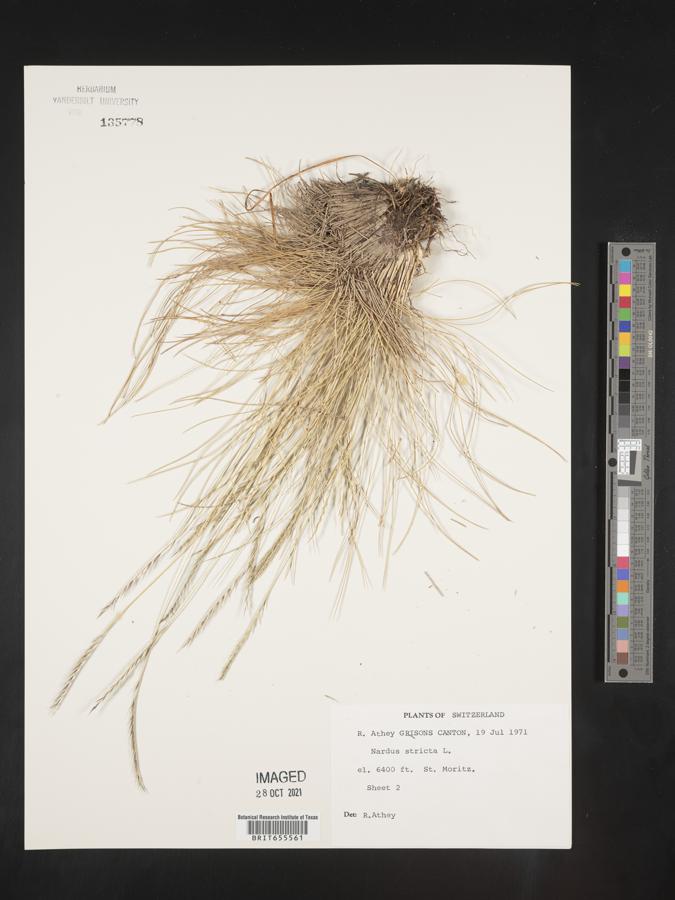Nardus
|
Family: Poaceae |
Plants perennial; cespitose. Culms 3-60 cm, erect; basal branching intravaginal. Leaves mostly basal; sheaths open; auricles absent; ligules membranous, entire, rounded; blades filiform, tightly convolute, epidermes with bicellular microhairs. Inflorescences terminal spikes, 1-sided, spikelets in 2 rows, loosely to closely imbricate; rachises terminating in a bristle; disarticulation below the floret. Spikelets triangular in cross section, with 1 floret, floret bisexual. Lower glumes a highly reduced, cupular rim; upper glumes absent or vestigial; florets 5-10 mm; lemmas linear-lanceolate to lanceolate-oblong, chartaceous, enveloping the paleas, 3-veined, awned; paleas hyaline, 2-veined, 2-keeled; lodicules absent; anthers 3; styles 1. x = 13. Name from the Greek nardos, referring to spikenard, an aromatic herb. It is not clear why the name was applied to this genus; its only species is not scented. Spikelets 1-fld, solitary and sessile, arising from shallow cavities and alternating on 2 sides of a 3-sided rachis, with a single minute glume; lemma lance-subulate, obscurely 3- veined, prolonged into a short awn, sharply infolded near each margin, the edges meeting over the linear obtuse palea; anthers filiform, elongate; stigma 1, filiform; densely cespitose perennial, the lower sheaths bladeless or with much reduced blade, the upper with narrow, linear, involute blade, the bluish spikelets in a slender spike, ascending, all turned in one direction. Monotypic. Gleason, Henry A. & Cronquist, Arthur J. 1991. Manual of vascular plants of northeastern United States and adjacent Canada. lxxv + 910 pp. ©The New York Botanical Garden. All rights reserved. Used by permission. |

